Spit, Tartar, and Burial: an Experiment's Diary
Bjørn Bartholdy investigates various aspects of dental calculus (tartar) and diet. In order to explore this, he initiated an experiment in which the formation of calculus was simulated.
This experiment forms a portion of my PhD project looking into various aspects of dental calculus (tartar) and diet. Starch grains are found in many food products and can become entrapped in dental calculus. This allows researchers to recover information about the food that was consumed in the past, as the starch grains can often be identified as elements of wheat, oat, barley, etc. However, we know little about how starch grains end up in calculus, and how much of the dietary behaviour of an individual in the past is actually encapsulated within the ancient dental calculus
The purpose of the experiment is to mimic archaeological conditions and determine how well starch grains survive in the soil when protected by calculus, and how much dietary information will be lost over time. Artificial dental calculus will be grown in the lab and “fed” with solutions containing potato and wheat starches twice daily for three weeks. The calculus will then be buried for periods of 3, 9, and 18 months, to document what happens to the starch grains within the calculus when they are in the ground. Once the samples have been excavated, they will be dissolved in a weak acid and analysed under a microscope to determine the quantity of starch grains remaining in each sample. The samples will be compared to control samples that are not buried, and will give some indication of the degradation of starch grains over time.

28-06-2019: Day 0
The first day of the experiment was spent spitting in a tube (for science!). Saliva donations were generously provided by the wonderful volunteers, which will be the inoculum. This is the most important step of the experiment, as it provides the proteins and bacteria that are essential for the initial growth of calculus. A plastic substitute for real teeth is submerged in the donated saliva, which will provide the pellicle and bacteria necessary to initiate the growth of calculus. The pellicle is a film of proteins that covers the teeth and allows bacteria to attach. After four hours, the “teeth” are transferred from the donated saliva to artificial saliva. It would be difficult to continuously provide fresh saliva for the duration of the experiment; the artificial saliva, which contains pig’s mucous and minerals present in real saliva, allows the volunteers to take a break and rehydrate.
Fun fact (admittedly loose definition of ‘fun’): The dental pellicle (re)forms on our teeth shortly after brushing. It protects our teeth from damage caused by eating and tooth-on-tooth contact; however, it also allows bacteria to attach to our teeth, and some of them are evil. So, remember to brush every day (but not too often)!
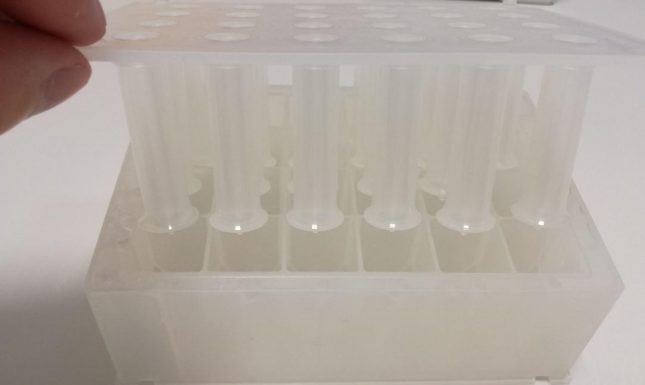
01-07-2019: Day 3
The second day of saliva donations. The “teeth” are once again submerged in fresh saliva to provide more of the necessary proteins and bacteria for biofilm formation (in case it didn’t take the first time).
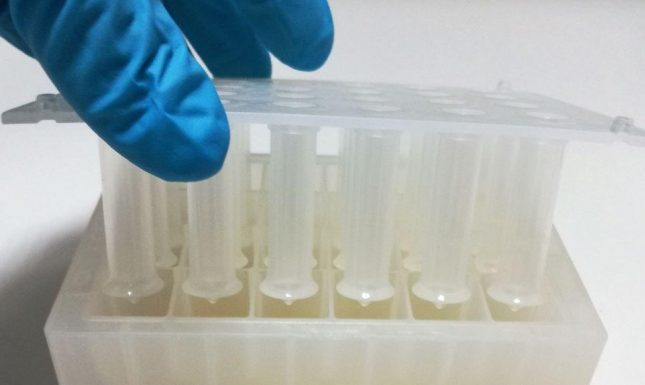
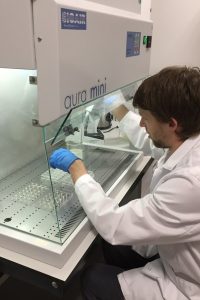
Fun fact: Saliva is a very important part of the oral environment. It consists mainly of water (ca. 99%), but also contains essential proteins and enzymes. It keeps the oral environment from becoming too acidic, and removes food particles from the teeth. Prolonged exposure to an acidic environment can cause tooth decay.
03-07-2019 Day 5
The last day of saliva donations, just to make extra sure that the necessary components are present and that the right type of bacteria are allowed to grow. This is the final day of inoculation, after which the bacteria will be (somewhat) left to their own devices. The only intervention is feeding them starch and sugar twice daily (like a low maintenance pet).
Fun fact: Another role of saliva is lubrication. When you start chewing on your food, the salivary glands in your mouth start producing saliva at a higher rate than normal. This helps you to swallow your food. Also thinking about food will increase the production of saliva; so, if you start drooling when you think about your favourite meal, it is completely normal!
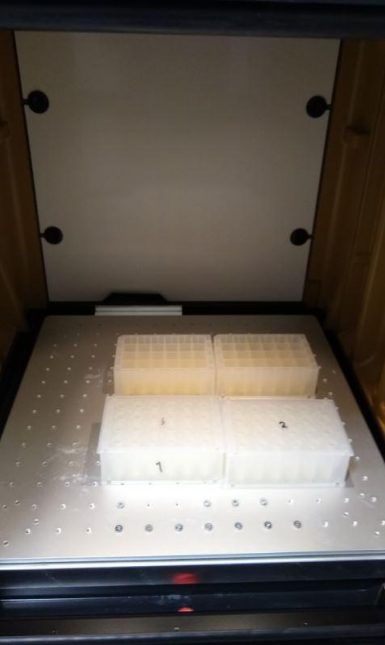
08-07-2019 Day 10
Some growth is now visible on the “teeth”. The layer of gunk is dental plaque, an oral biofilm comprised mainly of lots and lots of bacteria (yum!). This is what forms on your teeth if you don’t brush frequently. While mostly harmless and easy to remove, it can develop into the more harmful cavities and calculus.
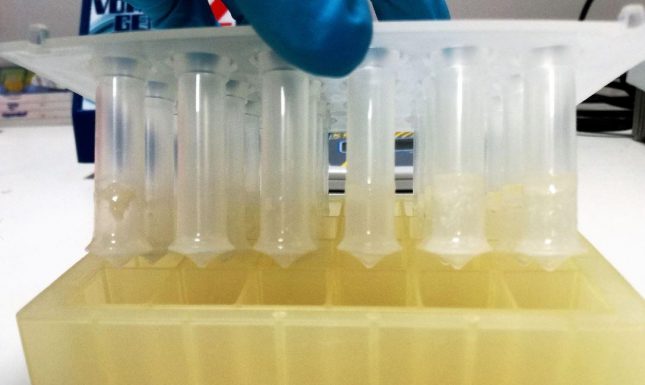
Fun fact: But wait, there’s more! Saliva also serves as the initial step in the digestion of food. The enzyme alpha-amylase can break down the starches in our food and transform them into smaller sugars which are easier for us to digest.
13-07-2019 Day 15
Because dental plaque takes a long time to mineralise and develop into calculus (can be weeks to months), mineralisation is encouraged by feeding the plaque with a high-mineral diet for the remainder of the experiment. Dental calculus mainly consists of calcium and phosphate and different variants of these, such as hydroxyapatite, brushite, and octacalcium phosphate.
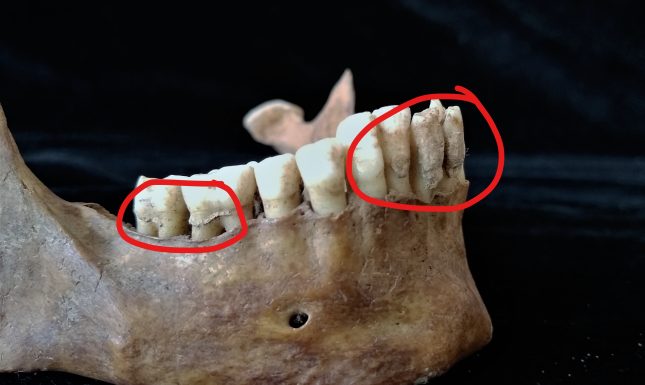
Fun fact: Because dental calculus is a very tough material (hydroxyapatite is also the main mineral in bone), if you have a large amount of it on your teeth it can actually protect your teeth from wearing down. However, this is not a recommended tactic since dental calculus can harbour a lot of evil bacteria and potentially cause gum disease.
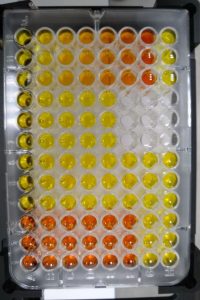
17-07-2019 Day 19
Remember the previous fact about starch and amylase? This means that if there is any amylase present during the experiment, it could potentially interfere with the interpretations about the burial environment. Therefore, samples of the artificial saliva were taken to test whether amylase is present and, if so, how much.
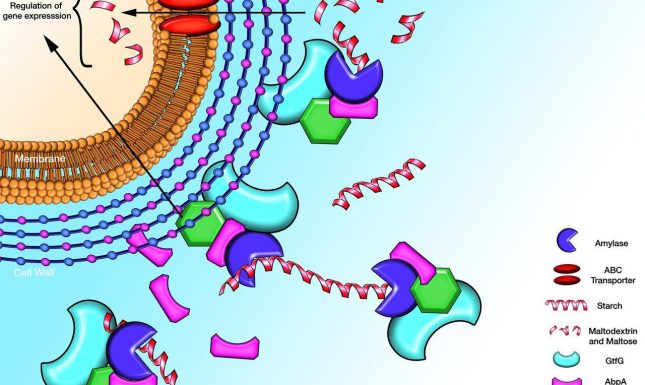
23-07-2019 Day 25
The final day of growth. The fully-formed calculus is ready to be buried for the next part of the experiment.
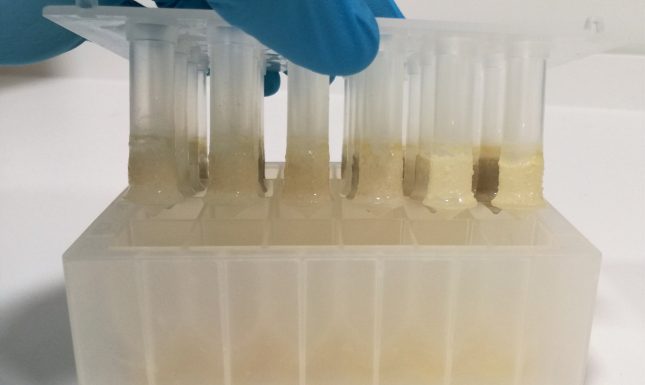
Fun fact: Calculus originally referred to (and is still mainly used for) a branch of mathematics and means “small pebble (or stone)” in Latin; small pebbles were often used as the original calculator (the older generation may also remember the abacus). It was not until the 18th century it was used to refer to mineral build-ups occurring in the body, including the kidney and teeth. In fact, many languages still refer to dental calculus as “tooth stone”.
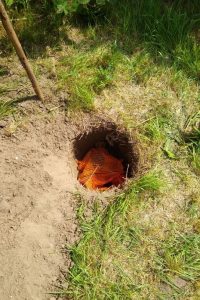
Burial: 24-07-2019
Burial of the samples was conducted in the beautiful Vlaardingen Broekpolder near a reconstruction of a Neolithic house. This was done on one of the hottest days of the summer(!!). Three holes were made for the three burial times. In each hole was placed duplicates of the starch-containing calculus samples and duplicates of the control samples. This also concludes the initial part of the experiment.
And now we wait…
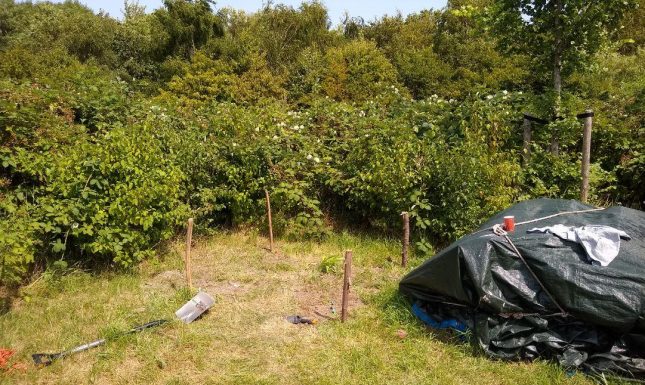



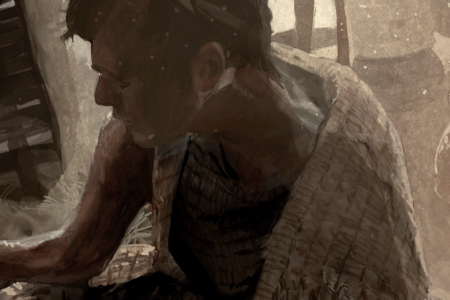
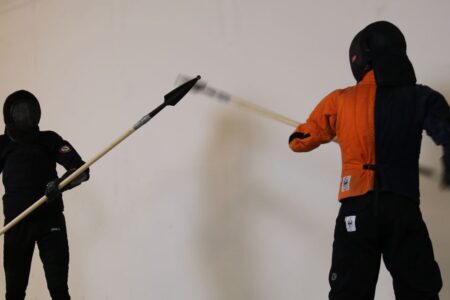
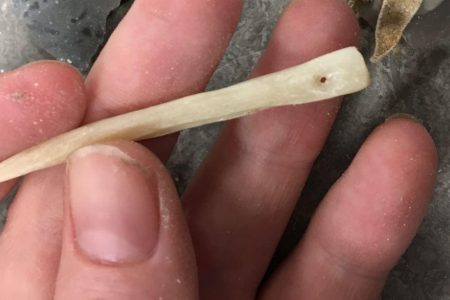
0 Comments
Add a comment